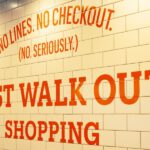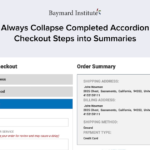Generation Z is here, and they are ready to shop — in a sustainable, budget-conscious manner.
Younger consumers such as Gen Z, who now represent 40% of United States consumers, tend to make purchasing decisions by looking at the convenience, quality — and crucially — the affordability of the product or service. Members of these generations have been some of the quickest to adopt buy now, pay later (BNPL) options. Introducing BNPL payment methods at their point-of-sale (POS) can help the savvy merchant convince spend-wary consumers to buy more when they reach checkout.
The Forever Sale: How Retailers Leverage BNPL To Captivate New Audiences, a PYMNTS and Afterpay collaboration, analyzes why retailers are beginning to take greater notice of BNPL’s potential value to customers, both new and existing, as well as how it could help to drive sales. Between Sept. 1 and Sept. 14, PYMNTS surveyed 360 businesses that generated $10 million or less in revenue to find out where, how and why they are tapping BNPL payment solutions and why examining this is critical for merchants — especially small- to medium-sized businesses (SMBs) looking to foster growth and improve customer conversion.
Key findings from the report include:
- Younger consumers such as millennials are three times as likely to use BNPL than older shoppers. Younger consumers appreciate the flexibility offered by BNPL, which enables them to break larger or more expensive payments into four, six or eight installments — ideal for millennial or Gen Z customers who covet trendy brands but not their price tags.
- BNPL users spend an average of $1,141 per week, making them a significant engagement tool for retailers. Consumers using BNPL methods also spend far above the average $150 per week of non-BNPL users, making them a compelling engagement tool for retailers of all sizes.
- Thirty-three percent of businesses offering BNPL stated an increase in their revenues from 2019 to 2020. Merchants supporting BNPL are also outperforming those that do not offer the method. Just 21% of business owners who did not support such payment tools reported an increase in revenue during that time.

Supporting BNPL may help make shopping more accessible for shoppers who keep tighter grips on their budgets, creating key opportunities for merchants. Paying close attention to how consumers are using BNPL could help present retailers with a marked advantage over their competitors, enabling them to capture and retain the loyalty of a higher number of customers and boost spending.
To learn more about how BNPL can boost merchants’ revenue and convince spend-wary shoppers to spend more, download the playbook.








